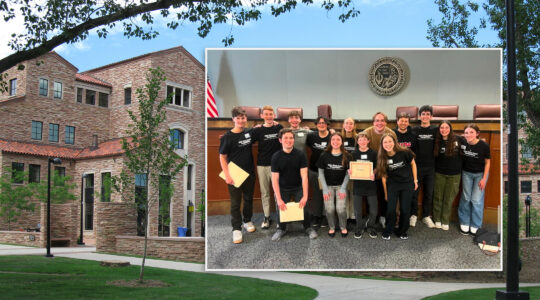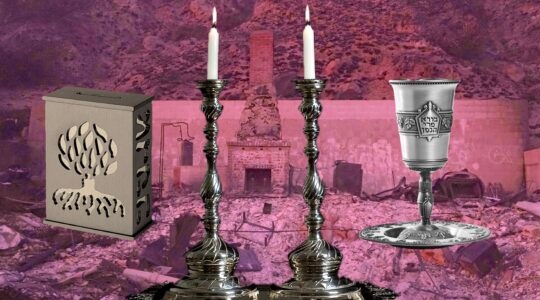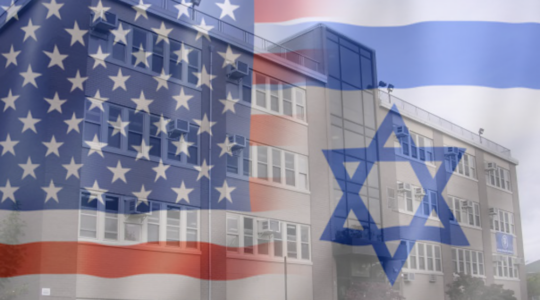Last week, the U.S. Supreme Court eroded the high wall of church-state separation in the U.S.
In Town of Greece vs. Galloway, a 5-4 majority ruled in favor of allowing the town council to begin its meetings with a prayer conducted by clergy, who — given the local population — are almost always Christian.
Predictably, the ruling provoked an adverse reaction among Jewish communal figures, including representatives of the American Jewish Committee, the Anti-Defamation League, Reform Judaism and the National Council of Jewish Women. Just as predictably, the Orthodox Union welcomed the decision, though cautiously.
But rather than causing consternation, the ruling ought to provoke our rethinking the separationist stance that has been vigorously pursued by organized Jewry since the 1930s. It was then and in the ’40s that several court decisions erected the exceptionally high wall of separation between religion and state in America. For good reasons, Jewish organizations and legal scholars developed the intellectual underpinnings and political savvy to assure America’s religiously neutral public square, one in which Jews and other minorities could feel both safe and included.
The Jewish interest in this policy was both pressing and obvious: Jews were routinely subject to discrimination in housing, employment, universities, charities, country clubs and so many other venues. Even as late as 1964, a social survey found that Jews were seen by their fellow American as the least welcome white ethnic group in the United States. Erecting a high church-state barrier was intrinsic to the effort to remove obstacles to Jews’ full participation in the larger society.
But “the times they are a-changin’.” Today, Jews are America’s most educationally and economically successful religious and ethnic group. And, as Robert Putnam reports in “American Grace,” Jews are also the most popular religious group in America. The very presence of three Jewish justices on the Supreme Court is itself testimony to Jews’ widespread acceptance and remarkable prominence.
While marginalization and discrimination were once the prime challenges to American Jews, the main threat to a vibrant Jewish future has shifted dramatically. Consider the following: With respect to Jews who have married since the year 2000, the Pew study revealed that of those raised Reform, 82 percent married non-Jews; of those with intermarried parents, 91 percent married non-Jews; and of these adult children of the intermarried, just 8 percent raise their oldest children in the Jewish religion. If the 20th century challenged Jewish acceptance, the 21st century challenges Jewish group survival.
These dramatic symptoms of weakening group identity are not unique to Jews; they’re common to all ethnic and religious groups in America. Mainstream Protestant denominations are in demographic freefall, as is the number of Anglo Catholics. Hispanics are rapidly disaffiliating with Catholicism. Even Evangelicals — once booming — are now experiencing numerical declines. The only group growing rapidly is the religious “nones,” those who define themselves as having no religion — about 3 percent of Americans in the ’50s, and 20 percent most recently.
Among Jews, those with no religion (in effect: “I’m Jewish, but I don’t identify Judaism or anything else as my religion”) now constitute 20 percent of all Jewish adults, and as much as 33 percent of those age 18-29. Now, these are not committed secularists akin to many Israelis, Russian-speakers or Yiddishists. They are so distant from Jewish life that of those who married after 2000, 77 percent are raising their oldest children as non-Jews.
Jews may feel and act more ethnic than religious, but the religious dimension to their individual identities and to their group cohesiveness is still critical. Unfortunately, American society and culture are particularly inhospitable to group identities — be they ethnic or, nowadays, even religious identities.
America may be a religious country, but secularization is advancing of late, and nowhere is it more advanced than in the social circles Jews tend to inhabit: highly educated, culturally liberal and geographically (or metaphorically) bicoastal. It is no accident that the least religious and least engaged Jews are also located in the West, the region of the country least hospitable to religiosity or ethnic persistence.
Some religion in the public square, provided that no single religion is embraced by the state, need not harm Jewish life. The Jews of Canada and the U.K., to cite two examples, have thrived even though their societies take a far different approach to church-state separation; and, France’s staunch secularism has done little to protect Jews against rising anti-Semitism. Most Jewish children in Great Britain attend Jewish day schools, now heavily supported by taxpayer funds. We find, in Canada, far higher rates of in-marriage, attachment to Israel, Jewish charitable contributions, residential concentration, institutional affiliation and numerous other indicators of Jewish engagement. In short, where religiosity is weak (as in the West), Jewish engagement is low. Where the church-state barrier is porous and flexible (as in Canada and the U.K.) Jewish cohesiveness is high (at least higher than in the U.S.). Canadian and British Jews may experience moments of marginality; but, if so, they benefit from living in societies that are more welcoming of religious expression than the U.S., and more supportive of religious instruction (of Jews and others) as well.
We are living in a time of ebbing religious commitment, and of waning religious animosities. Americans readily view Jews as friends, lovers and spouses. Among Jews, intermarriage and disavowing Jewish religious identity have reached their all-time highs. In light of all this assimilation, isn’t it time for organized American Jewry to rethink its reflexive insistence upon a high wall of separation between religion and state?
Steven M. Cohen, a sociologist, is a professor at the Hebrew Union College-Jewish Institute of Religion.
The New York Jewish Week brings you the stories behind the headlines, keeping you connected to Jewish life in New York. Help sustain the reporting you trust by donating today.




